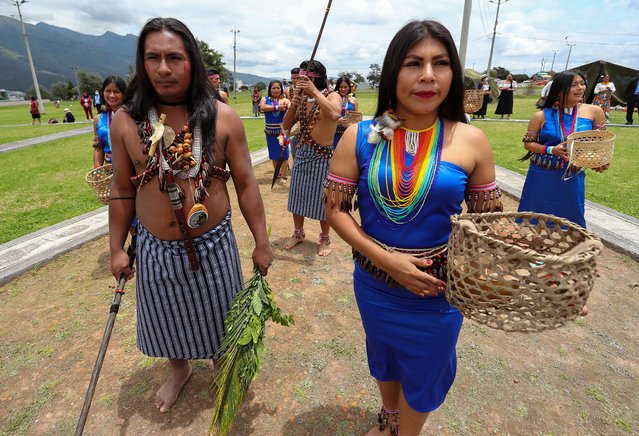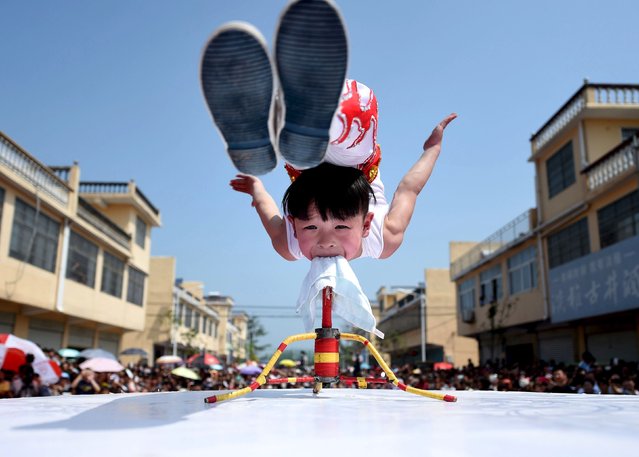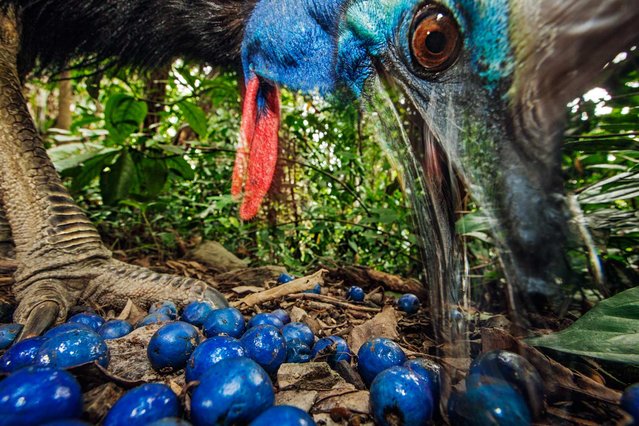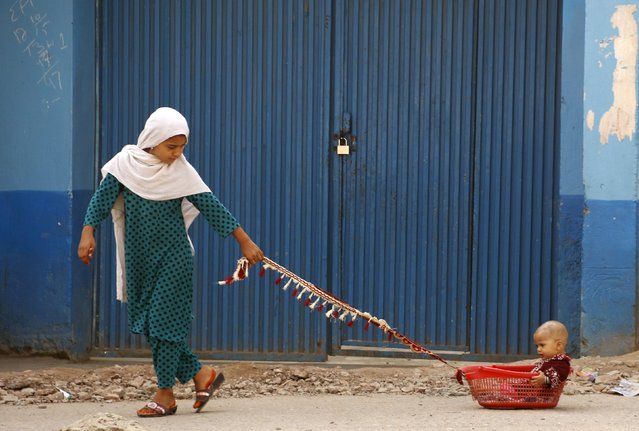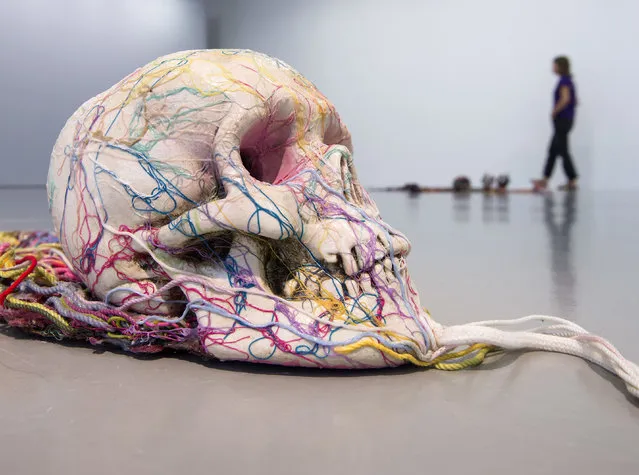
A woman walks behind the installation “Wandering boy is forever attractive” (1985) by Tetsumi Kudo during the press preview at the exhibition “Tetsumi Kudo – Retrospective” in the Fridericianum in Kassel, Germany, Friday, September 23, 2016. The exhibition offers an in-depth, comprehensive view of works by the Japanese artist Kudo. It starts on Sept. 25, 2016 and lasts until Jan. 1, 2017. (Photo by Jens Meyer/AP Photo)
24 Sep 2016 11:18:00,post received
0 comments

